Thị trường ngoại hối vào năm 2024 tiếp tục phát triển, với tỷ lệ doanh thu giao dịch hàng ngày trị giá trên 7,6 nghìn tỷ USD. Quy mô tuyệt đối có nghĩa là có vô số nhà môi giới ngoại hối hàng đầu để lựa chọn, nhưng không có câu trả lời chung cho tất cả.
Việc lựa chọn nhà môi giới lý tưởng có thể gây nhầm lẫn và tốn thời gian. Tuy nhiên, tôi đã tổng hợp hướng dẫn toàn diện này để hiểu rõ hơn cách so sánh các nhà môi giới ngoại hối tốt nhất, giúp bạn không phải vất vả trong quá trình thực hiện.
Mục lục
- Tìm hiểu bối cảnh thị trường ngoại hối
- Các yếu tố chính khi so sánh các nhà môi giới ngoại hối
- Các tính năng và dịch vụ nâng cao
- Xu hướng mới nổi trong môi giới ngoại hối
- Các công cụ và tính năng quản lý rủi ro
- Tính minh bạch và danh tiếng của nhà môi giới
- Tuân thủ và thay đổi quy định
- Tóm tắt các bài học
Tìm hiểu bối cảnh thị trường ngoại hối
Điều đầu tiên cần biết về ngoại hối là quy mô của nó. Nó lớn hơn hầu hết mọi người có thể hiểu được và bên trong nó có một mạng lưới toàn cầu gồm các tổ chức và nhà giao dịch. Việc điều hướng một bối cảnh phức tạp như vậy đòi hỏi sự hiểu biết cẩn thận về cấu trúc và những người chơi chủ chốt.
Cơ cấu thị trường và người tham gia
Thị trường ngoại hối hoạt động 24/7, năm ngày mỗi tuần trên toàn thế giới. Đó là một quá trình phi tập trung nên không có một sàn giao dịch duy nhất nào kiểm soát các giao dịch. Thay vào đó, nó là một mạng lưới máy tính và nhà giao dịch toàn cầu rộng lớn thực hiện các giao dịch đồng thời.
Thị trường ngoại hối được chia thành các cấp, với thị trường liên ngân hàng ở trên cùng của cấu trúc. Trong đó, các nhà giao dịch bán lẻ có thể tiếp cận thị trường thông qua các nhà môi giới ngoại hối trực tuyến, những người đóng vai trò trung gian. Ngoài ra còn có một số loại nhà môi giới khác nhau có mô hình giao dịch và mô hình thực hiện khác nhau. Các nhà tạo lập thị trường và các nhà môi giới ECN chỉ là hai ví dụ trong số này.
Thị trường liên ngân hàng
Đứng đầu trong cấu trúc ngoại hối là liên ngân hàng. Đây là nơi có thể tìm thấy các ngân hàng và tổ chức tài chính lớn và họ đã thử trực tiếp với nhau. Giao dịch trên thị trường liên ngân hàng chiếm phần lớn khối lượng giao dịch ngoại hối và mức chênh lệch này thường thấp hơn. Tuy nhiên, các nhà kinh doanh bán lẻ không có quyền truy cập trực tiếp vào thị trường này. Thay vào đó, các nhà môi giới ngoại hối đóng vai trò trung gian, cung cấp khả năng tiếp cận các nhóm thanh khoản sâu.
Bất kỳ giao dịch lớn nào trên thị trường liên ngân hàng đều có thể ảnh hưởng đáng kể đến tỷ giá hối đoái.
Thị trường ngoại hối bán lẻ
Trong vài năm qua, thị trường ngoại hối bán lẻ đã có sức hút lớn và hiện cực kỳ phổ biến. Điều này một phần là do các nền tảng giao dịch trực tuyến đã giúp giao dịch trở nên dễ dàng và toàn diện hơn. Trong không gian này, các nhà môi giới cạnh tranh để cung cấp các điều kiện, dịch vụ và nền tảng giao dịch. Nhiều nhà môi giới cũng cung cấp tài nguyên đào tạo cho người mới bắt đầu giao dịch và tài khoản demo để học hỏi.
Các nhà giao dịch bán lẻ cũng có thể tận dụng tỷ lệ đòn bẩy cao, cho phép họ kiểm soát các vị thế lớn hơn. Số tiền đòn bẩy khác nhau, đó là một lý do khác khiến việc so sánh các nhà môi giới ngoại hối lại quan trọng. Nhìn chung, thị trường ngoại hối bán lẻ được quản lý chặt chẽ hơn để bảo vệ các nhà đầu tư cá nhân.
Khi khám phá các nhà môi giới ngoại hối trực tuyến, điều quan trọng là phải hiểu cách họ kết nối các nhà giao dịch cá nhân với thị trường ngoại hối bán lẻ. Ngoài ra, điều quan trọng là phải khám phá các tính năng cũng như ưu và nhược điểm riêng của chúng.
Hãy cùng khám phá giao dịch ngoại hối điển hình. Điều này có thể liên quan đến việc mua 1 lô nhỏ EUR/USD, tương đương với 10.000 đơn vị. Với đòn bẩy 50:1, nhà giao dịch sẽ chỉ cần ký quỹ 200 USD để kiểm soát vị thế 10.000 USD. Đòn bẩy chắc chắn có thể tăng cơ hội kiếm lợi nhuận nhưng nó cũng làm tăng cơ hội thua lỗ.

Cặp tiền tệ và thanh khoản
Trong ngoại hối, một loại tiền tệ được giao dịch với một loại tiền tệ khác. Đây được gọi là một cặp tiền tệ. Tuy nhiên, tính thanh khoản của một cặp có thể tác động mạnh mẽ đến trải nghiệm giao dịch và nó có thể ảnh hưởng đến chênh lệch giá cũng như tốc độ khớp lệnh.
Các cặp tiền tệ được phân loại thành chính, phụ hoặc ngoại lai. Trong các cặp tiền tệ, tính thanh khoản có thể khác nhau rất nhiều và tính thanh khoản cao hơn thường dẫn đến chênh lệch giá chặt chẽ hơn và khớp lệnh nhanh hơn.
| Loại cặp | Ví dụ | Điển hình Chênh lệch | Thanh khoản |
| Chính | EUR/USD, USD/JPY | 0,5 -1,5 pip | Rất Cao |
| Nhỏ | EUR/GBP, AUD/CAD | 1,5-3 pip | Trung bình |
| Ngoại lai | USD/TRY, EUR/ZAR | 3+ pip | Thấp |
Các cặp chính
Không có gì đáng ngạc nhiên, các cặp chính là sự kết hợp tiền tệ được giao dịch nhiều nhất trong thế giới ngoại hối. Chúng thường liên quan đến đồng đô la Mỹ (USD) với một loại tiền tệ lớn khác, chẳng hạn như bảng Anh (GBP). Các cặp chính có tính thanh khoản cao nên mức chênh lệch của chúng thấp hơn và thời gian khớp lệnh nhanh hơn.
Cặp chính phổ biến nhất là EUR/USD, chiếm 22,7% giao dịch ngoại hối hàng ngày. Một trong những lý do chính khiến các cặp tiền chính trở nên phổ biến là vì chúng ít biến động hơn nên chúng rất lý tưởng cho người mới bắt đầu.
Cặp nhỏ và ngoại lai
Các cặp phụ còn được gọi là cặp tiền tệ chéo và chúng không bao gồm đô la Mỹ nhưng có thể bao gồm bảng Anh hoặc Euro. Tuy nhiên, các cặp ngoại lai liên quan đến tiền tệ từ các nền kinh tế mới nổi hoặc nhỏ hơn với đồng đô la Mỹ, bảng Anh hoặc Euro.
Cả hai cặp tiền nhỏ và ngoại lai đều có tính thanh khoản thấp hơn nên chúng có chênh lệch giá rộng hơn, nhưng chúng có thể dễ biến động hơn. Ngoài ra, các vấn đề kinh tế và chính trị có thể ảnh hưởng nhiều nhất đến các cặp ngoại lai. Tuy nhiên, các cặp nhỏ là một chiến lược đa dạng hóa tốt với điều kiện nghiên cứu cẩn thận được thực hiện trước khi đưa ra lựa chọn.
Các yếu tố chính khi so sánh các nhà môi giới ngoại hối
Chọn nhà môi giới để giao dịch ngoại hối không phải là một quyết định cần phải vội vàng. Có nhiều yếu tố chính cần được cân nhắc cẩn thận, bao gồm việc tuân thủ quy định, chi phí giao dịch, nền tảng có thể giao dịch và tài nguyên giáo dục. Điều quan trọng là phải xem xét các mục tiêu giao dịch cá nhân và sau đó so sánh các nhà môi giới ngoại hối dựa trên các tiêu chí chính.
Ví dụ: việc tuân thủ quy định là rất quan trọng vì nó đảm bảo độ tin cậy và bảo vệ tiền. Nhà môi giới ngoại hối được quản lý sẽ mang lại sự an tâm trong suốt quá trình giao dịch và hoạt động như một mạng lưới an toàn trong trường hợp xảy ra sự cố.
Chi phí giao dịch, bao gồm chênh lệch giá và hoa hồng, cũng cần được xem xét vì những chi phí này có tác động trực tiếp đến lợi nhuận. Ngoài ra, hãy xem xét các tính năng và công cụ chính của từng nhà môi giới. Ví dụ: các nhà giao dịch nâng cao có thể cần các công cụ phân tích chuyên sâu hơn và khả năng lập biểu đồ mà một số nhà môi giới cung cấp. Tuy nhiên, những người mới bắt đầu có thể thích sự sẵn có của tài khoản demo và tài nguyên giáo dục.
Dành thời gian tìm nhà môi giới cung cấp tất cả các tính năng mong muốn sẽ nâng cao cơ hội giao dịch thành công.
Tuân thủ quy định và an toàn
Tôi đã đề cập ngắn gọn về quy định nhưng điều quan trọng là phải hiểu chi tiết chủ đề này. Một nhà môi giới được quản lý tốt phải tuân theo các nguyên tắc tài chính nghiêm ngặt và thực hành giao dịch công bằng. Sự giám sát chặt chẽ của cơ quan quản lý sẽ bổ sung thêm sự bảo vệ cho tiền của bạn và đảm bảo rằng môi trường giao dịch được an toàn.
Tuy nhiên, không phải tất cả các bộ điều chỉnh đều được tạo ra như nhau. Các cơ quan quản lý cấp 1 hoặc cấp 1 hàng đầu bao gồm FCA ở Anh, CySEC ở Síp và ASIC ở Úc. Đây được coi là những cơ quan quản lý có uy tín nhất trên thị trường ngoại hối và phải tuân thủ các thông lệ nghiêm ngặt. Điều này bao gồm việc đảm bảo rằng tiền của khách hàng được giữ trong các tài khoản riêng biệt.
So sánh, các cơ quan quản lý nước ngoài có thể có ít sự bảo vệ hơn và điều quan trọng là phải đánh giá từng điểm thật cẩn thận.
Một nghiên cứu gần đây của Cơ quan quản lý tài chính nhấn mạnh tầm quan trọng này. Họ nhận thấy rằng 80% nhà giao dịch ngoại hối bán lẻ thua lỗ, vì vậy việc chọn một nhà môi giới có công cụ quản lý rủi ro phù hợp là rất quan trọng. Tại Top Brokers, chúng tôi có nguồn tài nguyên hữu ích về Các nhà môi giới ngoại hối do FCA quản lý, nơi cung cấp nhiều đề xuất chất lượng.
Tài khoản tách biệt
Các nhà môi giới ngoại hối được quản lý tốt nhất phải có tài khoản riêng biệt. Điều này đảm bảo rằng tiền giao dịch của khách hàng tách biệt với quỹ kinh doanh/hoạt động của nhà môi giới và nhà môi giới không thể sử dụng chúng. Đây là một tính năng bảo mật quan trọng trong trường hợp nhà môi giới mất khả năng thanh toán, vì tiền sau đó sẽ được trả lại cho khách hàng và không bị mất.
Bảo vệ số dư âm
Một tính năng an toàn quan trọng khác là bảo vệ số dư âm. Đây là điều cần tìm khi thực hiện so sánh các nhà môi giới ngoại hối .
Bảo vệ số dư âm đảm bảo rằng giao dịch không thể thua nhiều hơn số tiền trong tài khoản của họ. Đây là một khía cạnh quan trọng của giao dịch đòn bẩy nói riêng. Không phải tất cả các cơ quan quản lý đều yêu cầu nhà môi giới cung cấp biện pháp bảo vệ này, vì vậy điều quan trọng là phải kiểm tra trước khi đưa ra lựa chọn cuối cùng.
Nền tảng và công nghệ giao dịch
So sánh các nhà môi giới ngoại hối không chỉ về bản thân nhà môi giới mà còn về nền tảng giao dịch mà họ cung cấp. Có một số nền tảng chính, trong đó MetaTrader 4 và 5 là phổ biến nhất. Nền tảng có nhiều tính năng riêng, bao gồm các công cụ phân tích, sao chép giao dịch và giao dịch tự động. Nền tảng phù hợp có thể mang lại trải nghiệm giao dịch từ 0 lên 100 rất nhanh chóng.
Khi khám phá các nền tảng giao dịch ngoại hối khác nhau, điều quan trọng là phải xem xét các yếu tố như khả năng tùy chỉnh, khả năng tương thích với thiết bị di động và tính sẵn có của các công cụ biểu đồ nâng cao. Tại Nhà môi giới hàng đầu, chúng tôi có một số bài đánh giá, bao gồm Bài đánh giá của CQG Trader. Những điều này cung cấp thêm thông tin và giúp đưa ra quyết định đúng đắn.
Các nhà môi giới ngoại hối có uy tín thường cung cấp nhiều nền tảng, bao gồm MetaTrader và các nền tảng độc quyền của riêng họ. Ngoài ra còn có sự tập trung mạnh mẽ vào các nền tảng thân thiện với thiết bị di động trong ngành ngoại hối để giao dịch khi đang di chuyển.
MetaTrader 4 và 5
MetaTrader 4, còn gọi là MT4 và phiên bản cập nhật của nó, MetaTrader 5 (MT5) là những nền tảng được sử dụng phổ biến nhất để giao dịch ngoại hối. Chúng có nhiều tính năng, bao gồm các công cụ biểu đồ, tùy chọn tùy chỉnh và khả năng giao dịch tự động.
Trong số hai, MetaTrader 4 phổ biến hơn một chút do tính đơn giản và tập trung vào các tính năng ngoại hối. Theo dữ liệu ngành, 85% nhà giao dịch sử dụng MT4. Kết quả là nó trở thành nền tảng phổ biến nhất trên toàn thế giới. Tuy nhiên, MetaTrader 5 đang ngày càng phổ biến với nhiều loại tài sản hơn và khả năng giao dịch nâng cao. Tuy nhiên, cả MT4 và MT5 đều cung cấp Expert Advisors (EA) để giao dịch tự động. Bài đánh giá MetaTrader 4 của chúng tôi nêu chi tiết về nền tảng này.
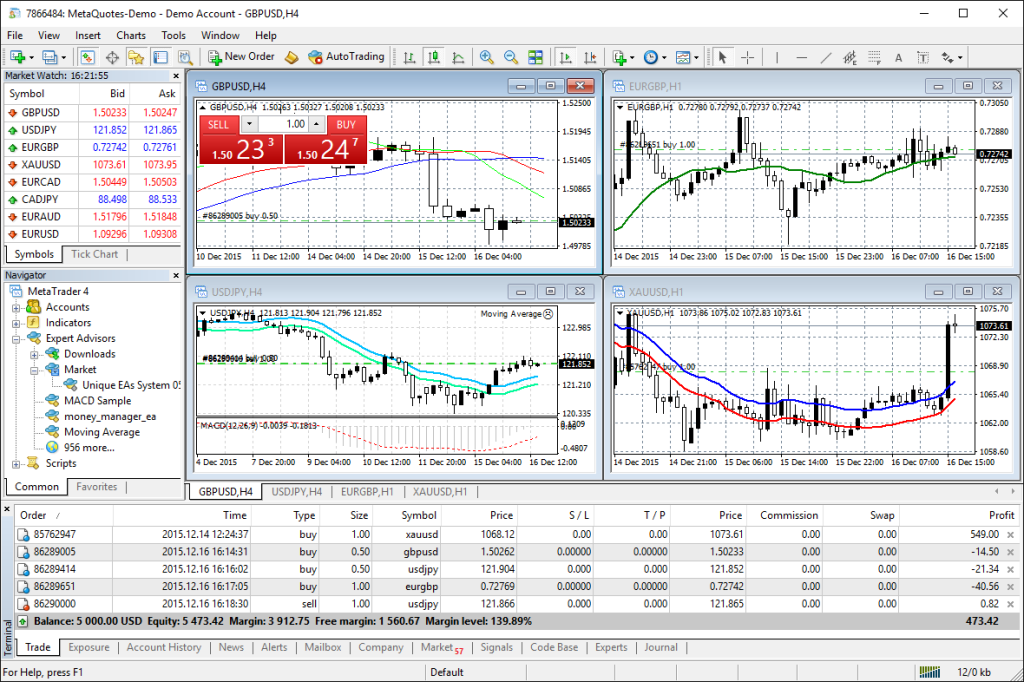
Nền tảng độc quyền
Nhiều nhà môi giới ngoại hối tốt nhất cũng có nền tảng giao dịch riêng, được gọi là nền tảng độc quyền. Chúng cũng có những tính năng độc đáo được thiết kế riêng cho chính nhà môi giới. Ví dụ: họ có thể có các công cụ chuyên dụng hoặc cung cấp trải nghiệm giao dịch hợp lý cho cơ sở khách hàng mục tiêu của nhà môi giới.
Nhược điểm của nền tảng độc quyền là chúng thường khó học hơn so với MetaTrader và đòi hỏi nhiều thời gian và công sức hơn.
Video này trình bày tổng quan về nền tảng giao dịch ngoại hối tốt nhất, hiển thị cả MetaTrader và các tùy chọn độc quyền.
Loại tài khoản và số tiền gửi tối thiểu
Các nhà môi giới ngoại hối có uy tín thường cung cấp các loại tài khoản khác nhau để phù hợp với các nhu cầu và cấp độ trải nghiệm khác nhau, bao gồm mức chênh lệch, hoa hồng và tính năng khác nhau. Trong đó, yêu cầu tiền gửi tối thiểu được áp dụng và chúng có thể dao động từ 0 USD đến hàng nghìn USD. Vì lý do này, việc nghiên cứu cẩn thận là rất quan trọng.
| Loại tài khoản | Tiền gửi tối thiểu điển hình | Loại chênh lệch | Tốt nhất Dành cho |
| Tiêu chuẩn | $100-$500 | Đã sửa | Be người chơi ginners |
| ECN | $1000+ | Biến | Có kinh nghiệm người giao dịch |
| VIP | 10.000$+ | Cực thấp | Người giao dịch có khối lượng lớn |
Tài khoản vi mô và Nano
Hai loại tài khoản phổ biến là micro và nano. Cả hai đều cho phép nhà giao dịch sử dụng kích thước vị thế nhỏ và lý tưởng cho những người mới bắt đầu muốn thử nghiệm các chiến lược với rủi ro tối thiểu. Nhìn chung, các loại tài khoản này mang lại cảm giác giao dịch trực tiếp mà không cần cam kết.
Tài khoản vi mô thường cho phép giao dịch với kích thước lô 0,01 và tài khoản nano có thể cung cấp kích thước nhỏ, đôi khi thấp tới 0,001 lô.
Tài khoản demo
Tài khoản demo là một chiến lược không rủi ro, lý tưởng cho những người giao dịch mới bắt đầu. Điều này cho phép các nhà giao dịch mới làm quen thực hành sử dụng tiền ảo trong điều kiện thị trường thực. Đó là một lựa chọn tuyệt vời để học các kỹ năng mới và thử nghiệm các chiến lược.
Hầu hết các tài khoản demo đều hết hạn sau một khoảng thời gian nhất định, thường là khoảng 30 ngày. Tuy nhiên, một số nhà môi giới ngoại hối cung cấp tài khoản demo không giới hạn. Tài nguyên của chúng tôi về các nhà môi giới tài khoản demo ngoại hối không hết hạn đưa ra các đề xuất hữu ích.
Điều quan trọng là phải dành nhiều thời gian cần thiết để sử dụng tài khoản demo trước khi chuyển sang giao dịch trực tiếp. Thông thường, giao dịch demo không mang lại các khía cạnh tâm lý và cảm xúc giống như việc mạo hiểm tiền thật và đây có thể là một sự điều chỉnh.
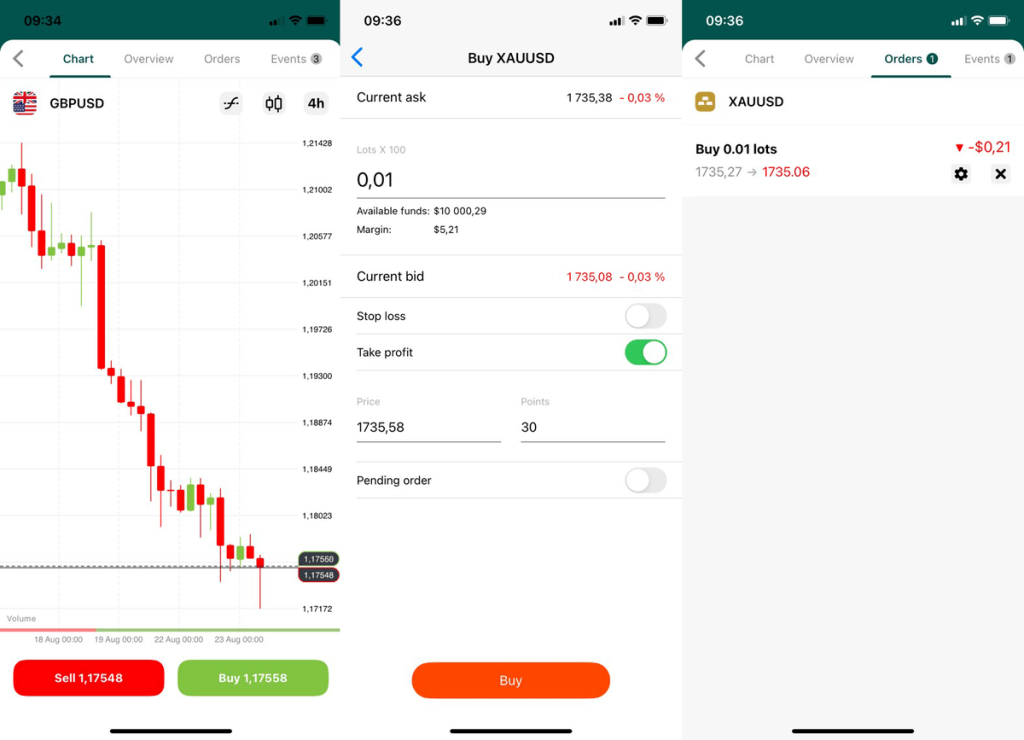
Chênh lệch và hoa hồng
Một khía cạnh quan trọng khác của việc chọn nhà môi giới để giao dịch ngoại hối là chênh lệch giá và hoa hồng. Phí có thể dễ dàng ăn vào lợi nhuận tiềm năng, vì vậy việc hiểu cấu trúc phí của nhà môi giới là rất quan trọng để đánh giá chi phí thực sự của một giao dịch.
Có hai loại chênh lệch: cố định và thay đổi. Tài nguyên của chúng tôi về các nhà môi giới ngoại hối có chênh lệch cố định tốt nhất là một tài liệu hữu ích. Tuy nhiên, mỗi loại đều có ưu và nhược điểm. Một số nhà môi giới tính phí thiếu sót ngoài hoặc thay vì chênh lệch giá.
Khi bạn bắt đầu so sánh các nhà môi giới ngoại hối, hãy tập trung vào cơ cấu chênh lệch và hoa hồng của họ. các nhà môi giới ngoại hối tốt nhất cung cấp mức phí minh bạch và chênh lệch cạnh tranh.
ECN so với các mô hình tạo lập thị trường
Các nhà môi giới thường hoạt động theo hai mô hình cụ thể: Nhà tạo lập thị trường và Mạng truyền thông điện tử, hay còn gọi là ECN.
Nhà môi giới ngoại hối ECN kết nối trực tiếp nhà giao dịch với nhà cung cấp thanh khoản, với mức chênh lệch thấp hơn kèm theo hoa hồng. Mặt khác, các nhà tạo lập thị trường tạo ra một thị trường để các nhà giao dịch hoạt động bên trong. Những giao dịch này thường không có hoa hồng nhưng có mức chênh lệch rộng hơn.
Cuối cùng, việc lựa chọn giữa hai phương pháp này phụ thuộc vào phong cách và sở thích tập luyện cá nhân.
Các tính năng và dịch vụ nâng cao
Các nhà môi giới ngoại hối hàng đầu thường cung cấp các tính năng và dịch vụ nâng cao để giúp họ nổi bật giữa đám đông. Việc đánh giá những điều này có thể tạo ra sự khác biệt lớn đối với trải nghiệm giao dịch tổng thể.
Tài nguyên giáo dục và phân tích thị trường
Đối với người mới bắt đầu và người giao dịch nâng cao, kiến thức rất quan trọng trong thế giới ngoại hối. Nhiều nhà môi giới ngoại hối có uy tín cung cấp thư viện tài nguyên giáo dục phong phú, bao gồm hướng dẫn cho người mới bắt đầu và hội thảo trực tuyến về chiến lược nâng cao. Một số nhà môi giới cũng cung cấp các chương trình huấn luyện hoặc cố vấn.
Những tài nguyên này không chỉ giúp các nhà giao dịch phát triển kỹ năng của họ mà còn cung cấp thông tin về xu hướng thị trường. Việc xem xét cẩn thận nhiều loại công cụ đào tạo được cung cấp có thể là một phần quan trọng trong việc chọn nhà môi giới ngoại hối tốt nhất .
Tín hiệu giao dịch và sao chép giao dịch
Trong quá trình so sánh các nhà môi giới ngoại hối , hãy tìm kiếm tính khả dụng của các tín hiệu giao dịch và sao chép các tính năng giao dịch. Đây đều là những lựa chọn có lợi cho tất cả các nhà giao dịch.
Tín hiệu giao dịch đưa ra gợi ý về các giao dịch có khả năng thành công dựa trên phân tích thị trường. Ngoài ra, giao dịch sao chép cho phép các nhà giao dịch mô phỏng các giao dịch thành công từ những người dùng khác.
Một nghiên cứu gần đây đã phát hiện ra rằng 90% nhà giao dịch thành công sử dụng robot/chuyên gia cố vấn để giúp họ giao dịch. Điều này nhấn mạnh việc sử dụng ngày càng nhiều các công cụ tự động trong ngành ngoại hối hiện đại. Tuy nhiên, mặc dù đây chắc chắn là những bổ sung hữu ích nhưng điều quan trọng là không nên hoàn toàn dựa vào chúng.
Lịch kinh tế và nguồn cấp tin tức
Điều quan trọng đối với tất cả các nhà giao dịch là luôn cập nhật tin tức thị trường và các sự kiện kinh tế. Những điều này có thể ảnh hưởng đáng kể đến hiệu suất của các cặp ngoại hối. Nhiều công ty môi giới ngoại hối hiện cung cấp lịch kinh tế và nguồn cấp tin tức tích hợp nêu bật các sự kiện quan trọng. Những công cụ này giúp nhà giao dịch hiểu được diễn biến thị trường theo thời gian thực mà không bị chậm trễ.
Giao dịch thuật toán và API
Công nghệ phát triển với tốc độ chóng mặt và thế giới ngoại hối cũng không ngoại lệ. Giao dịch theo thuật toán là một tính năng rất phổ biến và một số nhà môi giới ngoại hối tốt nhất kết hợp nó vào nền tảng của họ. Công cụ này cho phép các nhà giao dịch tự động hóa các chiến lược giao dịch, thực hiện giao dịch nhanh hơn so với khi thực hiện thủ công. Một ưu điểm khác là nó loại bỏ yếu tố ra quyết định cảm tính khỏi giao dịch.
API (Giao diện lập trình ứng dụng) là một công cụ khác cho phép tạo các ứng dụng giao dịch tùy chỉnh. Trong đó, khả năng giao dịch ngược cho phép các nhà giao dịch thử nghiệm các chiến lược bằng dữ liệu lịch sử. Tài nguyên của chúng tôi trên Algo Trading cung cấp thêm chi tiết.
Dịch vụ VPS
Tính năng cuối cùng cần tìm để so sánh các nhà môi giới giao dịch ngoại hối tốt nhất là dịch vụ VPS. Đây là viết tắt của Máy chủ riêng ảo và nó có thể rất hữu ích cho các nhà giao dịch thuật toán. VPS cho phép nhà giao dịch chạy thuật toán giao dịch 24/7, cho dù máy tính của họ có bật hay không. Điều này làm giảm nguy cơ bỏ lỡ một giao dịch có khả năng sinh lời.
Nhiều nhà môi giới ngoại hối ở Hoa Kỳ và xa hơn nữa có tính năng này, miễn phí hoặc với một khoản phí nhỏ. Tài nguyên của chúng tôi về nhà môi giới VPS ngoại hối tốt nhất cung cấp thêm chi tiết.
Hỗ trợ và dịch vụ khách hàng
Khía cạnh quan trọng cuối cùng cần xem xét khi tìm kiếm một công ty môi giới FX là hỗ trợ khách hàng. Hỗ trợ khách hàng nhanh chóng và đáng tin cậy là rất quan trọng, đặc biệt là trong thế giới ngoại hối có nhịp độ nhanh.
Nhìn chung, hỗ trợ khách hàng 25/7 là tiêu chuẩn ngành, nhưng một số nhà môi giới ngoại hối cung cấp hỗ trợ 24/7. Điều quan trọng nữa là kiểm tra xem kênh hỗ trợ nào có sẵn thông qua, chẳng hạn như trò chuyện trực tiếp, điện thoại, email và/hoặc mạng xã hội. Ngoài ra, hãy kiểm tra xem có cung cấp hỗ trợ đa ngôn ngữ hay không.
Chất lượng hỗ trợ kỹ thuật thường có thể rất quan trọng khi giải quyết một vấn đề, chẳng hạn như tranh chấp thương mại hoặc vấn đề kỹ thuật nền tảng.
Người quản lý tài khoản
Một số nhà môi giới ngoại hối trực tuyến cũng cung cấp trình quản lý tài khoản, thường dành cho khách hàng VIP hoặc nhà giao dịch có số dư tài khoản lớn. Tính năng này rất hữu ích vì người quản lý cung cấp hỗ trợ được cá nhân hóa, đôi khi bao gồm các điều kiện giao dịch ưu đãi. Tuy nhiên, hãy nhớ rằng người quản lý bán hàng có thể có mục tiêu bán hàng, vì vậy không nên đưa ra lời khuyên mà không cân nhắc kỹ lưỡng.
Xu hướng mới nổi trong môi giới ngoại hối
Tôi đã đề cập rằng ngành ngoại hối rất lớn và điều đó có nghĩa là nó liên tục chuyển dịch và thay đổi. Sự phát triển này có nghĩa là các công nghệ mới và nhu cầu thị trường luôn xuất hiện.
Điều quan trọng là phải luôn cập nhật thông tin về các xu hướng hiện tại và sắp tới, không chỉ để đưa ra các quyết định giao dịch mà còn phải chọn nhà môi giới ngoại hối tốt nhất ngay từ đầu. Hãy nhớ rằng, các nhà môi giới ngoại hối hàng đầu trong ngành thường áp dụng các công nghệ và tính năng mới trước bất kỳ ai khác.
Tích hợp tiền điện tử
Thế giới tiền điện tử đã trở nên phổ biến đáng kể trong vài năm qua và các nhà môi giới ngoại hối đã áp dụng các dịch vụ này. Giờ đây, nhiều nhà môi giới ngoại hối có uy tín cung cấp giao dịch tiền điện tử cùng với các cặp ngoại hối khác.
Tuy nhiên, giao dịch tiền điện tử thường có mức chênh lệch cao hơn và hạn chế đòn bẩy hơn do tính biến động và không chắc chắn gia tăng trên thị trường. Điều này được nhấn mạnh bởi các sự kiện vào năm 2022 , khi tổng giá trị của thị trường tiền điện tử toàn cầu giảm từ 2,9 nghìn tỷ USD vào năm 2021 xuống còn 798 tỷ USD.
Các cặp tiền điện tử
Một số nhà môi giới ngoại hối cung cấp các cặp tiền điện tử-tiền pháp định, kết hợp tiền điện tử với tiền tệ thông thường. Ví dụ: Bitcoin/USD hoặc Ethereum/EUR. Các nhà giao dịch quan tâm đến tiền điện tử nên khám phá các nhà môi giới có phần lớn các cặp này, lưu ý rằng việc xử lý theo quy định có thể khác nhau tùy theo khu vực pháp lý.
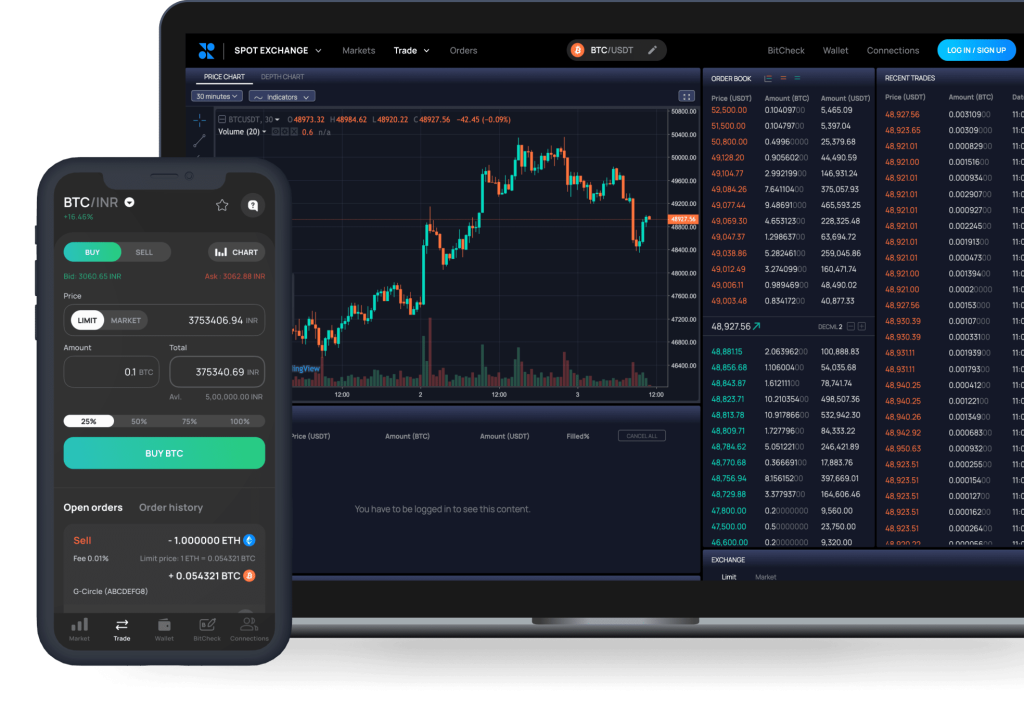
Blockchain trong ngoại hối
Công nghệ chuỗi khối đã xuất hiện được một thời gian nhưng nó đã được cải thiện đáng kể trong vài năm qua. Công nghệ này có tiềm năng cách mạng hóa các lĩnh vực giao dịch ngoại hối khác nhau. Trên thực tế, một số nhà môi giới đã kết hợp blockchain để thanh toán minh bạch và nhanh chóng. Hiện tại chắc chắn vẫn còn là những ngày đầu, nhưng xu hướng này đáng để theo dõi chặt chẽ.
Tính năng cộng đồng và giao dịch xã hội
Một bổ sung phổ biến cho thế giới môi giới ngoại hối là giao dịch xã hội, cùng với các tính năng cộng đồng khác. Điều này cho phép các yếu tố truyền thông xã hội được kết hợp với giao dịch, cho phép các nhà giao dịch tương tác và chia sẻ chiến lược. Giao dịch xã hội là một lựa chọn tốt cho người mới bắt đầu và có thể được sử dụng như một công cụ học tập. Tuy nhiên, yếu tố xã hội có thể giúp một số nhà giao dịch tiếp tục tham gia.
Theo dõi hiệu suất
Một số nền tảng giao dịch xã hội cung cấp các công cụ theo dõi hiệu suất cho phép các nhà giao dịch phân tích hiệu suất của họ với những người khác trên cùng một nền tảng. Một lần nữa, điều này cho phép người dùng học hỏi lẫn nhau và xác định các lĩnh vực cần cải thiện.
Các chỉ số hiệu suất phổ biến bao gồm tỷ lệ thắng, lợi nhuận được điều chỉnh theo rủi ro và lãi/lỗ trung bình. Ngoài ra, một số nền tảng cho phép nhà giao dịch lọc người dùng khác dựa trên số liệu thống kê hiệu suất của họ.
Diễn đàn thảo luận
Một khía cạnh quan trọng khác của giao dịch xã hội là khả năng tương tác trong các diễn đàn thảo luận. Đây là những thông tin hữu ích để chia sẻ những hiểu biết sâu sắc về thị trường và ý tưởng chiến lược. Chúng cho phép các nhà giao dịch kết nối với nhau và chia sẻ ý tưởng, đưa ra những quan điểm và ý kiến đa dạng. Tuy nhiên, điều quan trọng là không nên để tâm đến tất cả lời khuyên của diễn đàn và xác minh bất kỳ điều gì có vẻ không chính xác
Những tiến bộ trong giao dịch trên thiết bị di động
Nhiều người dùng thích giao dịch khi đang di chuyển, khuyến khích nền tảng giao dịch ngoại hối tốt nhất giới thiệu phiên bản di động. Những phiên bản này thường cạnh tranh với các phiên bản dành cho máy tính để bàn về chức năng và sự tiện lợi. Một số ứng dụng bao gồm khả năng lập biểu đồ nâng cao và thông báo theo thời gian thực, cùng với các tính năng bảo mật đăng nhập nâng cao, chẳng hạn như đăng nhập sinh trắc học. Điều này thường được xác nhận thông qua nhận dạng khuôn mặt hoặc dấu vân tay.
Các công cụ và tính năng quản lý rủi ro
Giao dịch ngoại hối không phải là không có rủi ro và quản lý rủi ro là một phần quan trọng của câu đố. nhà môi giới ngoại hối tốt nhất có nhiều công cụ giúp bảo vệ vốn của nhà giao dịch và giao dịch tự tin hơn. Kết quả là, tổn thất lớn ít có khả năng xảy ra.
Lệnh dừng lỗ và chốt lời
Các công cụ quản lý rủi ro chính bao gồm lệnh dừng lỗ và chốt lời. Những biện pháp này bảo vệ khỏi những biến động bất ngờ của thị trường và khi được sử dụng cẩn thận, chúng có thể giảm thiểu rủi ro liên quan đến giao dịch.
Lệnh dừng lỗ tự động đóng giao dịch bất cứ khi nào giá đạt đến mức mà nhà giao dịch đã chỉ định trước đó. Ngoài ra, lệnh chốt lời sẽ đóng giao dịch bất cứ khi nào lợi nhuận đạt đến mức xác định trước. Ngoài ra còn có các điểm dừng cuối, có thể giúp chốt lợi nhuận khi thị trường diễn biến thuận lợi.
Ví dụ: nhà giao dịch mở một vị thế mua EUR/USD ở mức 1,1000, đặt mức dừng lỗ ở mức 1,0950 và chốt lãi ở mức 1,1100. Điều này tạo ra tỷ lệ rủi ro-lợi nhuận là 1:2. Nếu thị trường đi ngược lại họ, số tiền họ có thể mất nhiều nhất là 50 pip. Nếu nó diễn biến có lợi cho họ, họ sẽ kiếm được 100 pip. Chiến lược quản lý rủi ro được xác định trước này giúp nhà giao dịch duy trì kỷ luật và tránh đưa ra quyết định theo cảm tính.
Dừng lỗ được đảm bảo
Công cụ quản lý rủi ro tiếp theo cần tìm là mức dừng lỗ được đảm bảo. Điều này đảm bảo vị thế đóng ở mức giá chính xác mà nhà giao dịch chỉ định. Điều này xảy ra ngay cả khi thị trường biến động mạnh. Công cụ này thường đi kèm một khoản phí nhưng nó mang lại sự an tâm và có thể giảm thiểu rủi ro trong những biến động lớn của thị trường.
Tuy nhiên, không phải tất cả các nhà môi giới ngoại hối trực tuyến đều cung cấp mức dừng lỗ được đảm bảo, vì vậy đây là điều cần khám phá khi so sánh các nhà môi giới.
Công cụ tính phần thưởng rủi ro
Công cụ tính phần thưởng rủi ro giúp xác định kết quả tiềm năng của giao dịch. Mặc dù chúng không chính xác 100% nhưng chúng đưa ra ý tưởng rõ ràng về những gì nhà giao dịch có thể thua hoặc kiếm được. Công cụ này thường được sử dụng cùng với việc đặt lệnh dừng lỗ và chốt lãi. Một số máy tính nâng cao thậm chí có thể xem xét các yếu tố như tỷ lệ thắng và kỳ vọng.
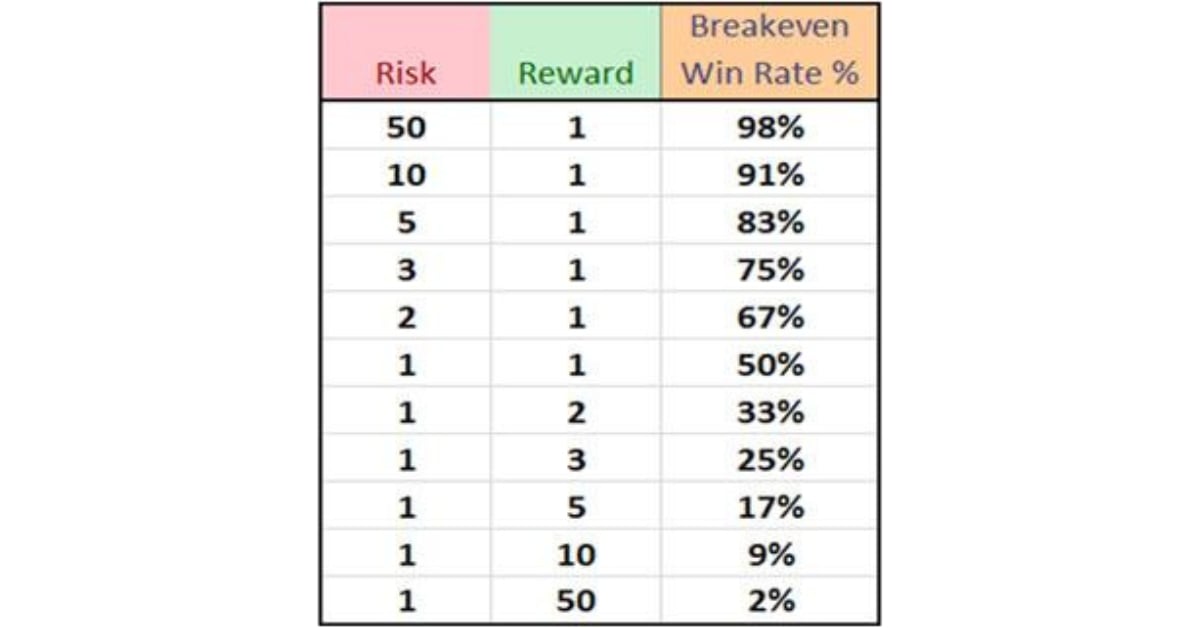
Kiểm soát ký quỹ và đòn bẩy
Đòn bẩy là một công cụ hữu ích nhưng nó cũng có mặt tiêu cực. Nó có thể khuếch đại lợi nhuận đáng kể trong một số trường hợp, nhưng nó cũng có thể phóng đại tổn thất lên mức đáng kể tương tự. Trong giao dịch đòn bẩy, điều quan trọng là sử dụng các biện pháp kiểm soát đòn bẩy để khai thác sức mạnh của nó một cách cẩn thận.
Đòn bẩy theo bậc
Một số nhà môi giới cung cấp cấu trúc đòn bẩy theo cấp độ có thể được điều chỉnh phù hợp với khối lượng giao dịch hoặc mức độ kinh nghiệm của từng cá nhân. Theo thời gian, các nhà môi giới thường đưa ra tỷ lệ đòn bẩy cao hơn, do đó khuyến khích giao dịch có trách nhiệm và có cơ hội phát triển.
Điều quan trọng cần nhớ là không phải lúc nào cũng cần có tỷ lệ đòn bẩy cao vì tỷ lệ đòn bẩy thấp hơn trên các vị thế lớn hơn có thể giúp quản lý rủi ro cho các giao dịch lớn hơn. Một số nhà môi giới ngoại hối yêu cầu nhà giao dịch chứng minh kinh nghiệm để tiếp cận đòn bẩy cao hơn hoặc thậm chí vượt qua bài kiểm tra. Điều này cho thấy mức đòn bẩy cao có thể rủi ro đến mức nào, tuy nhiên, các hạn chế pháp lý đối với đòn bẩy tối đa thường khác nhau tùy theo khu vực pháp lý.
Chính sách yêu cầu ký quỹ
Lệnh gọi ký quỹ được đưa ra bởi nhà môi giới và nó thông báo cho các nhà giao dịch rằng đã đến lúc thêm tiền hoặc đóng vị thế. Các nhà môi giới khác có thể bắt đầu thanh lý tự động để bảo vệ tài khoản của nhà giao dịch khỏi số dư âm.
Nói chung, mức gọi ký quỹ nằm trong khoảng từ 50% đến 100% số tiền ký quỹ đã sử dụng. Một số nhà môi giới đưa ra nhiều mức cảnh báo trước, nhưng một số khác thì không. Điều quan trọng là phải đánh giá các chính sách này khi chọn nhà môi giới ngoại hối tốt nhất.
Công cụ đa dạng hóa danh mục đầu tư
Mở rộng đầu tư và giao dịch trên nhiều loại tài sản và cặp tiền tệ là một chiến lược tích cực. Điều này đảm bảo rằng trong trường hợp điều kiện thị trường bất lợi, nhà giao dịch sẽ không mất tất cả. Nó có thể được so sánh với việc “không bỏ hết trứng vào một giỏ”.
Một số nhà môi giới ngoại hối tốt nhất cung cấp các công cụ giúp nhà giao dịch quản lý đa dạng hóa danh mục đầu tư.
Ma trận tương quan
Ma trận tương quan cho thấy các cặp tiền tệ khác nhau di chuyển như thế nào so với nhau. Hiểu được điều này có thể giúp các nhà giao dịch tránh được những rủi ro tương quan. Ví dụ: một nhà giao dịch có thể thường xuyên chọn các cặp GBP/USD mà không nhận ra rằng chúng thường di chuyển tương tự nhau, do đó không đạt được sự đa dạng hóa.
Các giá trị tương quan nằm trong khoảng từ -1, cho thấy mối tương quan âm hoàn toàn, đến +1, cho thấy mối tương quan dương hoàn hảo. Điều quan trọng nữa là phải thường xuyên xem xét các mối tương quan vì chúng có thể thay đổi qua lại theo thời gian.
Giao dịch nhiều tài sản
Nhiều nhà môi giới ngoại hối tốt nhất cung cấp nhiều loại tài sản có thể giao dịch, chẳng hạn như cổ phiếu, hàng hóa hoặc chỉ số. Việc có cách tiếp cận đa tài sản cho phép các nhà giao dịch đa dạng hóa danh mục đầu tư ngoài ngoại hối. Điều này có nghĩa là rủi ro được trải đều hơn, nhưng nhà giao dịch cũng có thể tận dụng các cơ hội trên các thị trường khác nhau.
Tính minh bạch và danh tiếng của nhà môi giới
Khi thực hiện so sánh các nhà môi giới ngoại hối, tính minh bạch và danh tiếng là những yếu tố quan trọng cần đánh giá. Các nhà môi giới phải sẵn sàng cởi mở và minh bạch về hoạt động của mình, đồng thời điều đó báo hiệu độ tin cậy và thực tiễn giao dịch công bằng.
Thể hiện sự minh bạch có nghĩa là tiết lộ toàn bộ chi phí giao dịch và chính sách thực thi. Ngoài ra, cả tình trạng pháp lý và sự ổn định tài chính đều làm nổi bật danh tiếng của nhà môi giới, cùng với đánh giá của khách hàng và bất kỳ giải thưởng nào trong ngành mà họ đã giành được.
Chất lượng và tốc độ thực thi
Khớp lệnh nhanh chóng và đáng tin cậy là hai điều quan trọng đối với bất kỳ nhà giao dịch nào. Thế giới ngoại hối có nhịp độ nhanh và ngay cả sự do dự nhỏ nhất cũng có thể ảnh hưởng đến kết quả giao dịch.
Tốc độ thực hiện đặc biệt rất quan trọng đối với các chiến lược giao dịch ngắn hạn diễn biến với tốc độ nhanh hơn. Tuy nhiên, có một số yếu tố có thể ảnh hưởng đến tốc độ thực thi, bao gồm vị trí máy chủ, độ trễ mạng và quy trình đặt hàng. Vì lý do đó, hãy tìm kiếm các nhà môi giới công bố số liệu thống kê thực hiện để cung cấp thông tin quan trọng trước khi đưa ra quyết định.
Thống kê trượt giá
Trượt giá xảy ra khi giao dịch được thực hiện ở một giá trị khác với giá trị được yêu cầu. Việc một lượng nhỏ trượt giá xảy ra trong các thị trường chuyển động nhanh là điều bình thường, nhưng trượt giá quá mức sẽ gây tổn hại đến lợi nhuận. Bạn nên tìm kiếm các nhà môi giới ngoại hối trực tuyến minh bạch về số liệu thống kê trượt giá của họ. Một số nhà môi giới cũng cung cấp lệnh “không trượt giá” đối với các lệnh giới hạn.
Ví dụ: nhà giao dịch đặt lệnh thị trường để mua EUR/USD ở mức 1,1000. Do điều kiện thị trường thay đổi nhanh chóng, lệnh được thực hiện ở mức 1.1002. Mức trượt 2 pip này có vẻ nhỏ, nhưng trên một lô tiêu chuẩn (100.000 đơn vị), nó thể hiện chi phí bổ sung là 20 USD. Trong nhiều giao dịch, sự trượt giá như vậy có thể ảnh hưởng đáng kể đến lợi nhuận.
Báo cáo thực hiện lệnh
Báo cáo thực hiện chuyên sâu là một công cụ tuyệt vời để hiểu quy trình thực hiện lệnh của nhà môi giới. Những thông tin này cho biết tần suất các lệnh được thực hiện ở mức giá được yêu cầu, tốc độ khớp lệnh trung bình và sự cải thiện về giá. Ngoài ra, các báo cáo này có thể thay đổi theo thời gian, vì vậy điều quan trọng là phải xem lại chúng thường xuyên.
Ổn định tài chính và quyền sở hữu
Sự ổn định tài chính của một nhà môi giới ảnh hưởng đến mức độ an toàn của tiền của nhà giao dịch. Bạn nên đi sâu vào nền tảng tài chính và cơ cấu sở hữu của một nhà môi giới để tìm hiểu về độ tin cậy thực sự của họ.
Nói chung, các nhà môi giới giao dịch công khai mang lại sự minh bạch tài chính cao hơn và quy mô cơ sở khách hàng cũng như khối lượng giao dịch của nhà môi giới thường cho thấy sự ổn định.
Báo cáo tài chính thường niên
Báo cáo tài chính hàng năm của nhà môi giới có thể dài và phức tạp nhưng chúng cung cấp nhiều thông tin về tình hình tài chính. Các lĩnh vực chính cần tìm kiếm bao gồm lợi nhuận ổn định, dự trữ vốn mạnh và tăng trưởng bền vững. Hầu hết các nhà môi giới đều vui vẻ chia sẻ báo cáo hàng năm của họ, nhưng nếu không, đó có thể là một dấu hiệu để tránh chúng.
Tính minh bạch về quyền sở hữu
Các nhà môi giới ngoại hối có uy tín thường minh bạch về quyền sở hữu và đội ngũ quản lý của họ. Tốt nhất nên tránh các công ty môi giới có cấu trúc quyền sở hữu phức tạp hoặc khó hiểu vì đôi khi đó có thể là một nỗ lực nhằm trốn tránh sự giám sát của cơ quan quản lý.
Ngoài ra, việc hiểu cấu trúc công ty của một nhà môi giới có thể cung cấp thông tin về hoạt động toàn cầu của họ.
Giải thưởng và sự công nhận trong ngành
Mặc dù không phải tất cả các nhà môi giới ngoại hối hàng đầu đều giành được giải thưởng nhưng chúng có thể là dấu hiệu của chất lượng và sự đổi mới. Điều quan trọng cần nhớ là một số giải thưởng có uy tín hơn những giải thưởng khác, vì vậy hãy xem xét kỹ độ uy tín của tổ chức trao giải. Ngoài ra, hãy tìm kiếm các giải thưởng tập trung vào một yếu tố cụ thể trong dịch vụ của nhà môi giới và thận trọng với bất kỳ giải thưởng nào dường như được trao cho nhiều nhà môi giới cùng một lúc.
Giải thưởng Đổi mới
Một giải thưởng tốt để tìm kiếm có liên quan đến sự đổi mới. Những giải thưởng này cho thấy các nhà môi giới đang vượt qua các ranh giới và mong muốn áp dụng công nghệ mới. Những giải thưởng như vậy có thể ghi nhận những tiến bộ của nền tảng giao dịch, công cụ quản lý rủi ro hoặc dịch vụ cho khách hàng. Tuy nhiên, một số giải thưởng này có thể tập trung vào tiếp thị hơn là mang lại lợi ích thực sự cho nhà giao dịch.
Giải thưởng về sự hài lòng của khách hàng
Một giải thưởng đáng tìm kiếm là giải thưởng về sự hài lòng của khách hàng, đặc biệt nếu giải thưởng đó dựa trên phản hồi đã được xác minh của khách hàng. Những điều này có thể cung cấp thông tin chi tiết chính xác về chất lượng dịch vụ của nhà môi giới và cho thấy khả năng đáp ứng dịch vụ khách hàng, độ tin cậy của nền tảng và trải nghiệm giao dịch tổng thể.
Tuy nhiên, giống như tất cả các giải thưởng, điều quan trọng là phải tham khảo chéo chúng với các nguồn phản hồi khác của khách hàng để phát triển quan điểm cân bằng. Cũng nên nhớ rằng các giải thưởng được trao cách đây vài năm có thể không phản ánh mức độ phục vụ ngày nay.
Tuân thủ và thay đổi quy định
Cũng như phần còn lại của thế giới ngoại hối, bối cảnh pháp lý cũng không ngừng phát triển. Điều quan trọng là luôn cập nhật những thay đổi nhất có thể và hiểu chúng ảnh hưởng như thế nào đến hoạt động giao dịch với các nhà môi giới cụ thể. Ví dụ: những thay đổi về quy định có thể ảnh hưởng đến việc cung cấp tài sản, giới hạn đòn bẩy và bảo vệ nhà giao dịch.
Bằng cách hiểu rõ môi trường pháp lý tổng thể, nhà giao dịch có thể chọn nhà môi giới có mức độ giám sát phù hợp. Tôi đã đề cập rằng các cơ quan quản lý hàng đầu cung cấp mức độ bảo vệ tốt nhất cho các nhà giao dịch và điều quan trọng là phải giám sát chặt chẽ điều này. Các nhà môi giới ngoại hối được quản lý tốt nhất thường có nhiều giấy phép từ một số cơ quan quản lý hàng đầu. Điều này mang lại sự bảo vệ thêm và sự yên tâm cho các nhà giao dịch.
Ngoài ra, các thị trường được quản lý tốt như Vương quốc Anh, Úc, Châu Âu và các khu vực ở Viễn Đông có mức độ tập trung cao vào hoạt động ngoại hối. Theo dữ liệu ngành, 78% doanh thu ngoại hối toàn cầu diễn ra tại một trong năm trung tâm tài chính lớn trên toàn thế giới. Đó là Mỹ, Anh, Singapore, Nhật Bản và Hồng Kông.
Quy định ESMA ở Châu Âu
ESMA là viết tắt của Cơ quan Thị trường và Chứng khoán Châu Âu, cơ quan đã thực hiện những thay đổi lớn trong vài năm qua. Những điều này đặc biệt ảnh hưởng đến giới hạn đòn bẩy và hoạt động tiếp thị. Mục đích của các quy tắc này là để bảo vệ các nhà giao dịch bán lẻ và thay đổi bối cảnh giao dịch theo chiều hướng tốt hơn.
Các nhà giao dịch ở Châu Âu hoặc những người có nhà môi giới Châu Âu nên cập nhật và hiểu rõ các quy định này.
Yêu cầu của NFA và CFTC của Hoa Kỳ
Tại Hoa Kỳ, Hiệp hội Tương lai Quốc gia (NFA) và Ủy ban Giao dịch Hàng hóa Tương lai Hàng hóa (CFTC) giám sát giao dịch. Các cơ quan này kiểm soát chặt chẽ các yêu cầu về đòn bẩy, báo cáo và vốn môi giới. Thương nhân Hoa Kỳ phải biết các quy định này vì chúng có tác động đáng kể đến các lựa chọn giao dịch.
Ví dụ: quy định của Hoa Kỳ giới hạn đòn bẩy ở mức 50:1 đối với các cặp tiền tệ chính và 20:1 đối với các cặp tiền tệ nhỏ. Quy tắc Vào trước, Xuất trước (FIFO) cũng áp dụng cho các nhà giao dịch ngoại hối ở Hoa Kỳ.
Quy định giao dịch xuyên biên giới
Thế giới có thể rộng lớn nhưng cực kỳ kết nối và việc các nhà giao dịch ngoại hối khám phá các nhà môi giới ở các quốc gia khác là điều bình thường. Mặc dù điều này là có thể, nhưng có một số thách thức pháp lý cần xem xét. Ví dụ, một số cơ quan quản lý hạn chế cư dân của họ giao dịch với các nhà môi giới nước ngoài.
Ngoài ra, giao dịch xuyên biên giới đôi khi có thể ảnh hưởng đến nghĩa vụ thuế và yêu cầu báo cáo. Điều quan trọng là phải làm việc với chuyên gia thuế để đảm bảo thuế được báo cáo đúng cách.
Tác động của Brexit đến các nhà môi giới ở Vương quốc Anh
Khi Vương quốc Anh rời khỏi EU, được gọi là Brexit, một sự phân chia quy định mới giữa Vương quốc Anh và EU đã mở ra. Điều này có ý nghĩa đối với các nhà môi giới Vương quốc Anh với khách hàng EU và các nhà môi giới EU với khách hàng Vương quốc Anh. Các nhà giao dịch thuộc danh mục này phải luôn cập nhật những thay đổi có thể ảnh hưởng đến tài khoản như thế nào và các biện pháp bảo vệ hiện có.
Trong một số trường hợp, một số nhà môi giới ở Vương quốc Anh đã thành lập các thực thể ở EU để họ có thể tiếp tục phục vụ khách hàng ở Châu Âu, nhưng đây không phải là trường hợp của tất cả. Đây cũng là một tình huống diễn biến nhanh và điều quan trọng là phải cập nhật thông tin nhiều nhất có thể.
Hợp tác pháp lý quốc tế
Do tầm quan trọng của thị trường ngoại hối toàn cầu, nên có sự thúc đẩy hợp tác quốc tế trong quản lý ngoại hối. Nhiều cơ quan quản lý đang hợp tác để tạo ra các quy tắc tiêu chuẩn hóa và đảm bảo giám sát cẩn thận hoạt động giao dịch xuyên biên giới. Tuy nhiên, điều này không phải là không có thách thức.
Các sáng kiến như Mạng lưới đổi mới tài chính toàn cầu nhằm mục đích tăng cường hợp tác pháp lý. Ngoài ra, việc chuẩn hóa báo cáo có thể giúp cơ quan quản lý điều chỉnh hoạt động ngoại hối một cách chính xác, tuy nhiên vẫn có những thách thức trong việc tạo ra bầu không khí hài hòa giữa các khu vực pháp lý khác nhau.
Tóm tắt bài học
Thế giới ngoại hối rộng lớn, phức tạp và liên tục thay đổi. Tuy nhiên, đó là thứ có thể mang lại lợi nhuận lớn cho những nhà giao dịch thực hiện những bước đi đúng đắn. Điều quan trọng nằm ở việc chọn đúng nhà môi giới ngoại hối được cá nhân hóa theo nhu cầu, sở thích và mục tiêu giao dịch cụ thể của bạn.
Tóm lại, hãy tóm tắt lại những điểm chính mà chúng ta đã thảo luận:
- Việc tuân thủ quy định là không thể thương lượng. Luôn xác minh trạng thái quy định của nhà môi giới.
- Nền tảng giao dịch phải phù hợp với phong cách giao dịch và nhu cầu kỹ thuật của bạn.
- Xem xét bức tranh toàn cảnh về chi phí giao dịch, bao gồm chênh lệch giá, hoa hồng và các loại phí khác.
- Các tính năng nâng cao như giao dịch xã hội và khả năng di động có thể nâng cao trải nghiệm giao dịch của bạn.
- Các công cụ quản lý rủi ro mạnh mẽ là điều cần thiết để bảo vệ vốn.
- Tính minh bạch trong hoạt động và tài chính là dấu hiệu của một nhà môi giới uy tín.
- Được thông báo về những thay đổi quy định có thể ảnh hưởng đến giao dịch của bạn.
Cuối cùng, việc chọn nhà môi giới ngoại hối tốt nhất cho nhu cầu cá nhân của bạn cần có thời gian, nghiên cứu và nỗ lực. Ngoài ra, điều quan trọng là phải hiểu đầy đủ về thế giới ngoại hối.
Tại TopBrokers, chúng tôi có nhiều bài viết và so sánh để giúp bạn cải thiện kỹ năng của mình và đưa ra những quyết định đúng đắn. Hướng dẫn của chúng tôi về cách tạo và quản lý chiến lược giao dịch ngoại hối là nơi khởi đầu lý tưởng. Cuối cùng, khi bạn so sánh các nhà môi giới ngoại hối, hãy nhớ rằng nhiều nhà môi giới vượt trội trong một số lĩnh vực. Khám phá các yếu tố khác nhau và chọn yếu tố phù hợp nhất với nhu cầu giao dịch và mức độ chấp nhận rủi ro của bạn

 RoboForex
RoboForex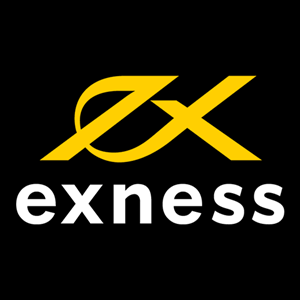 Exness
Exness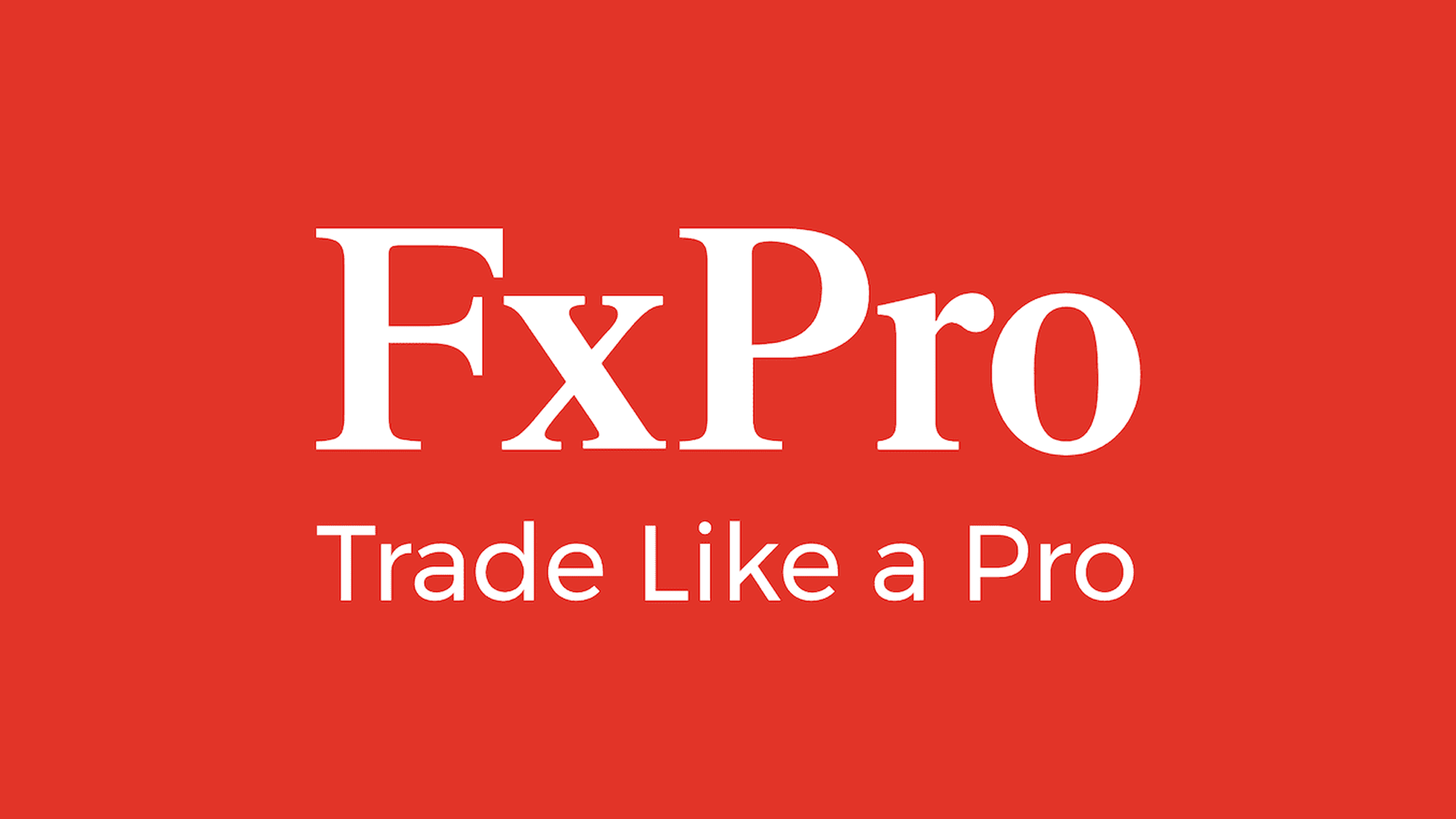 FxPro
FxPro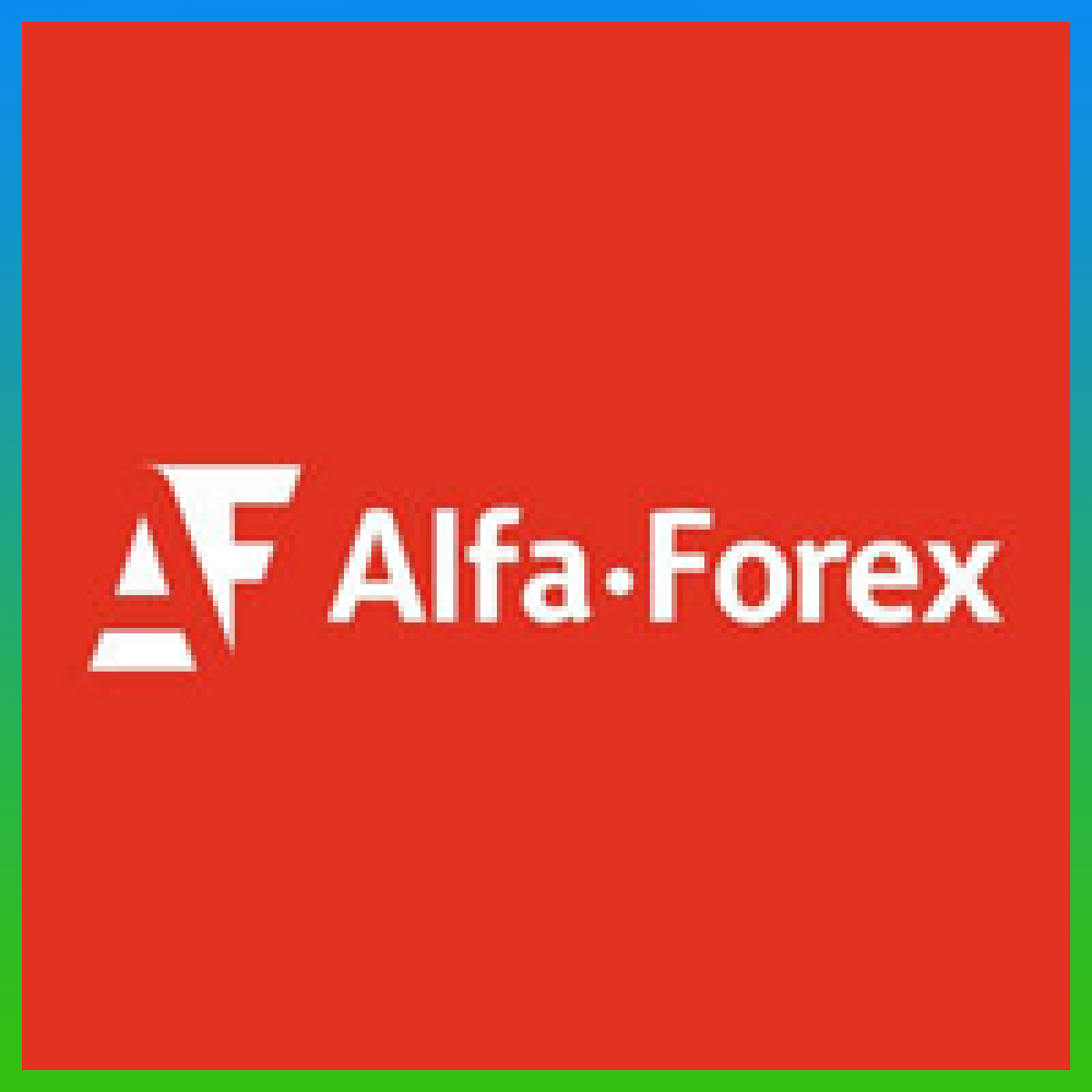 Alfa-Forex
Alfa-Forex Libertex
Libertex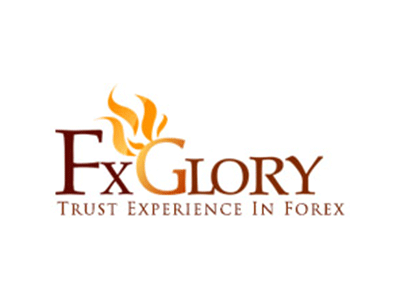 FxGlory
FxGlory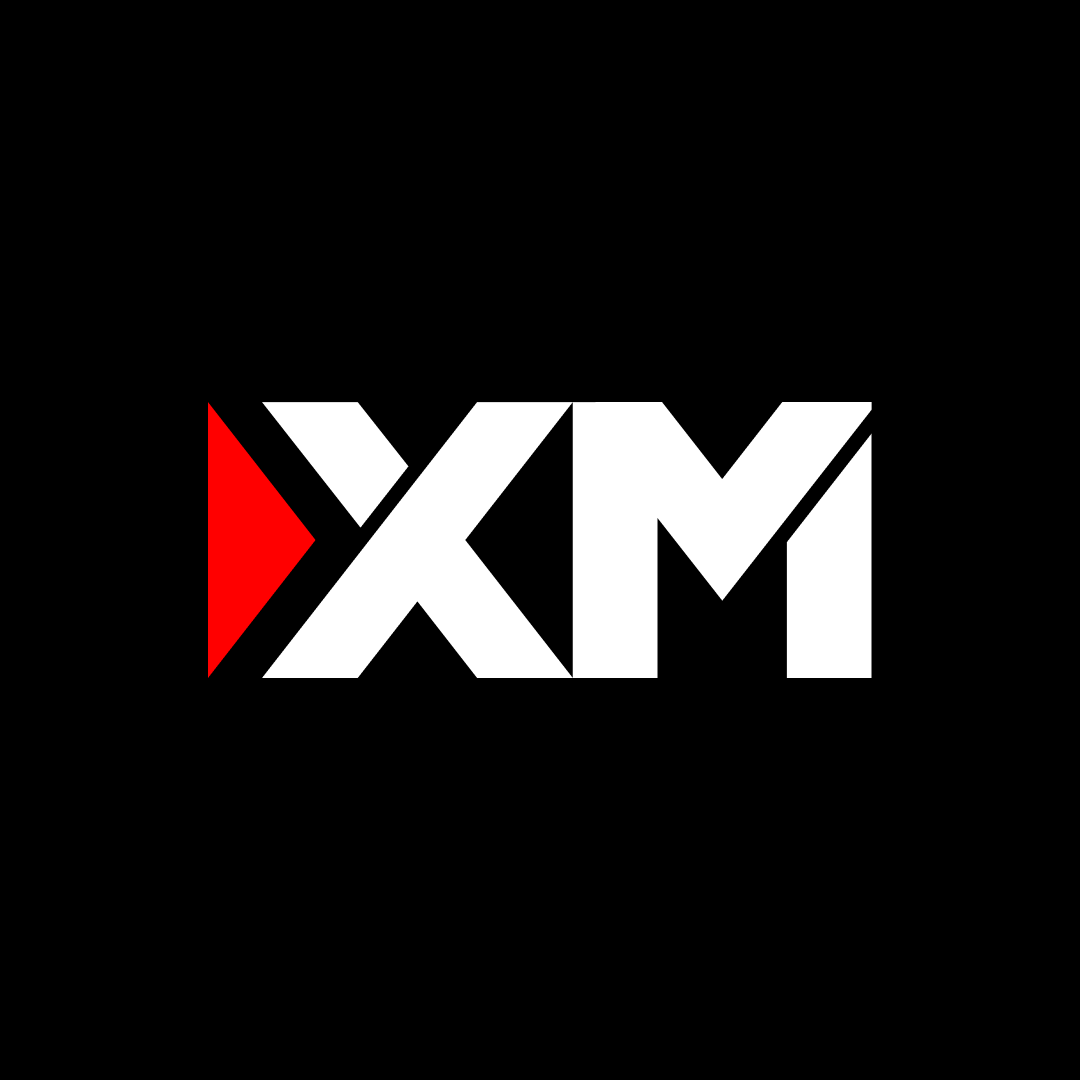 XM
XM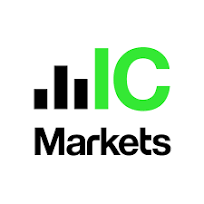 Thị trường IC
Thị trường IC
